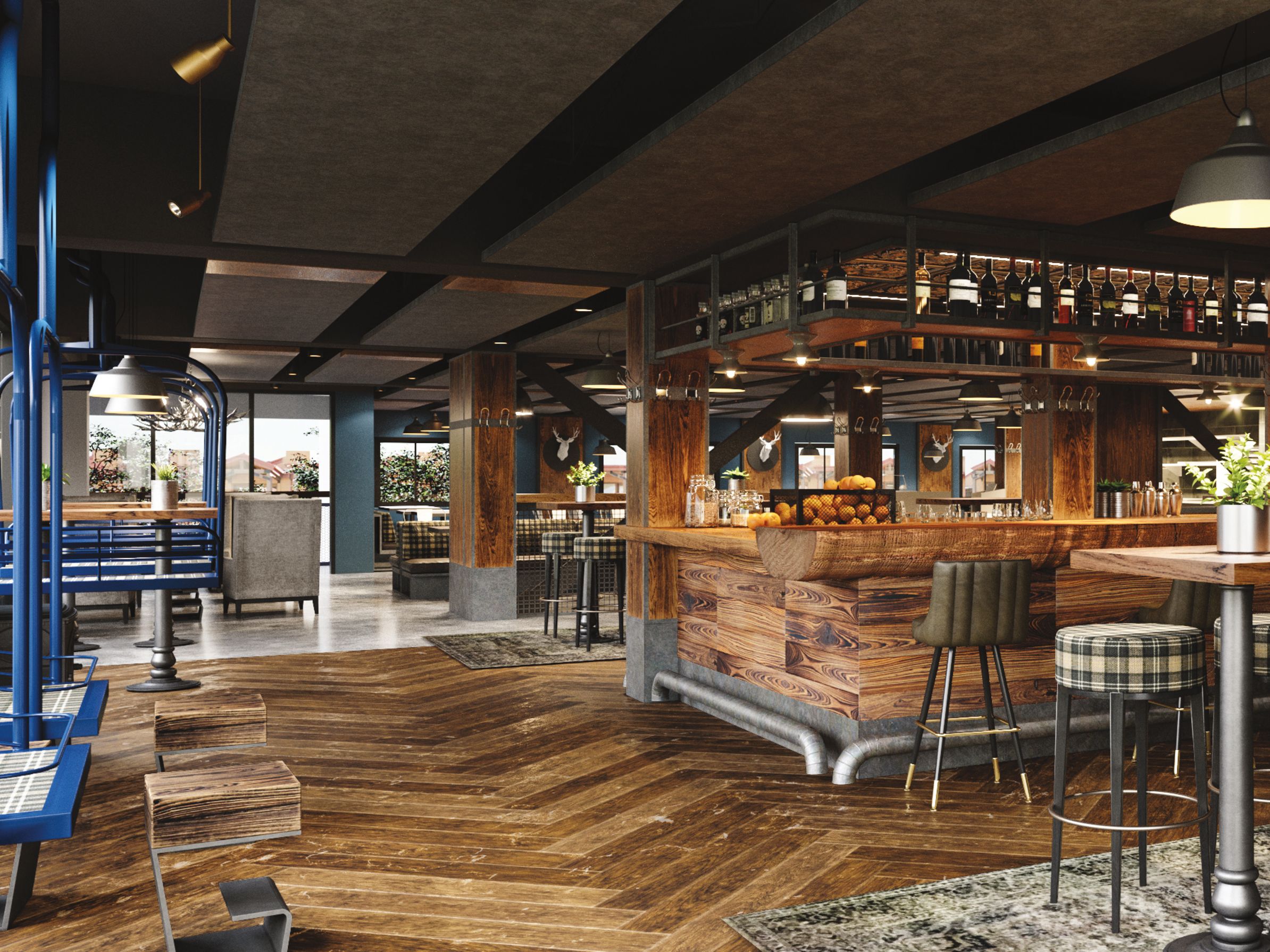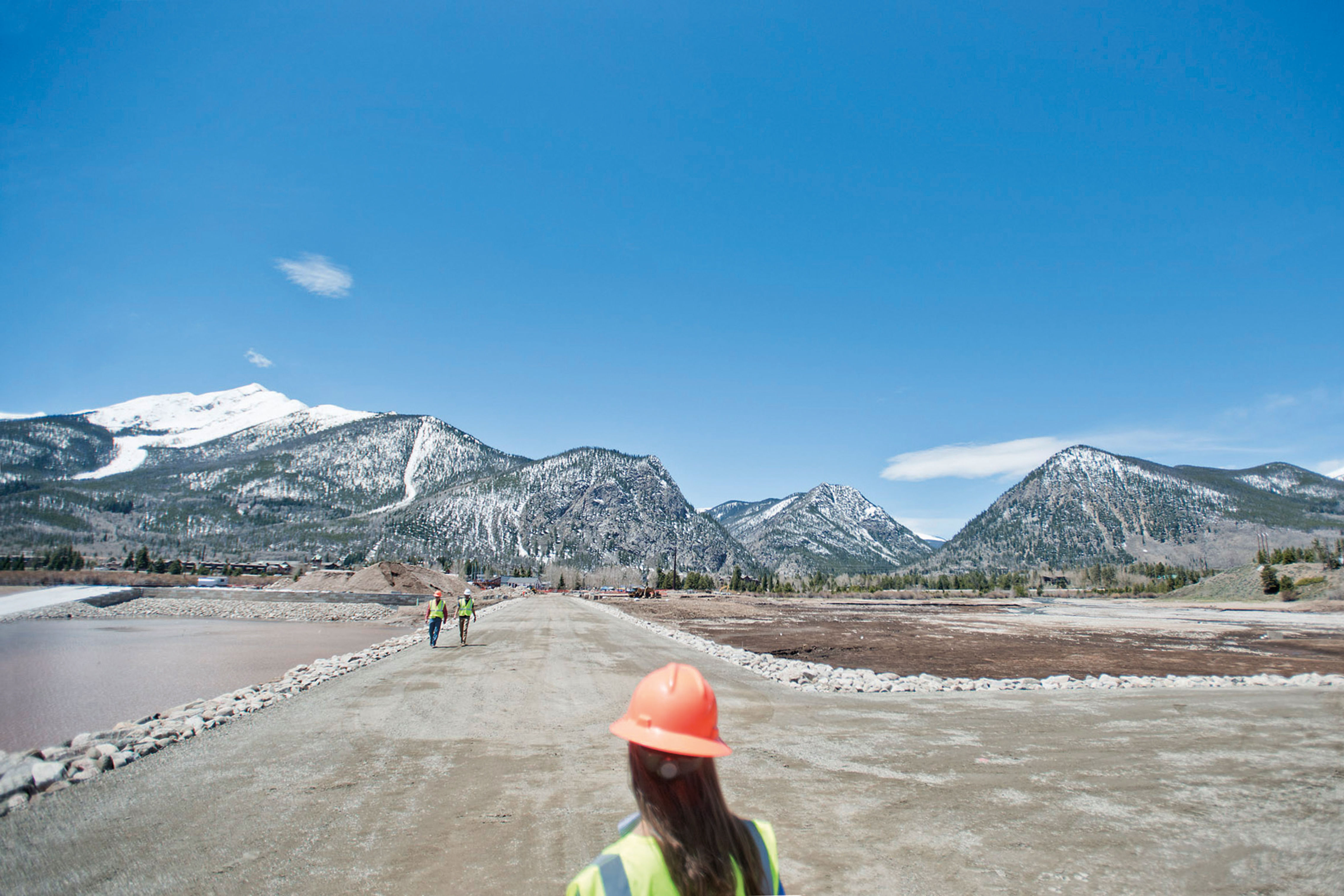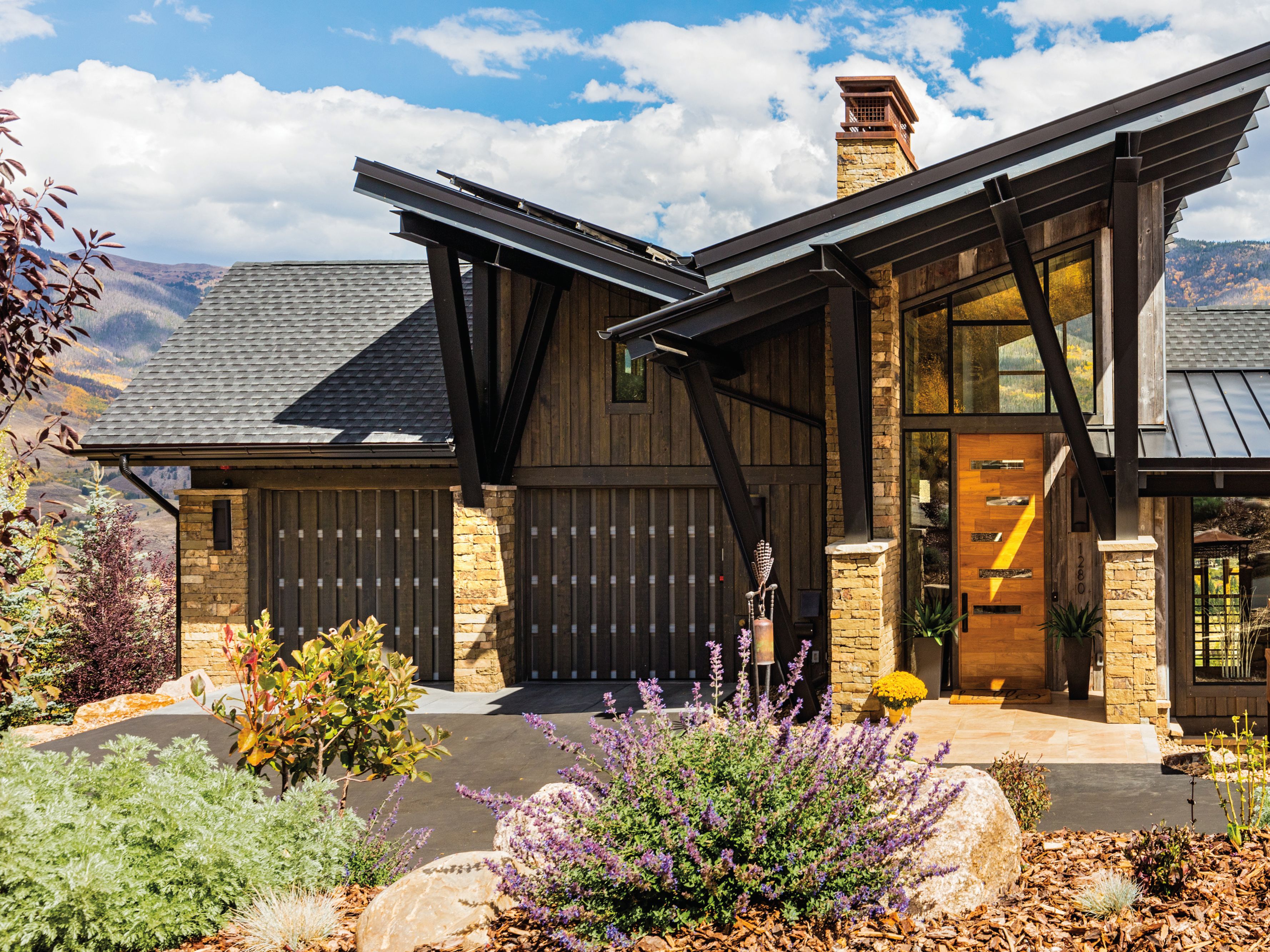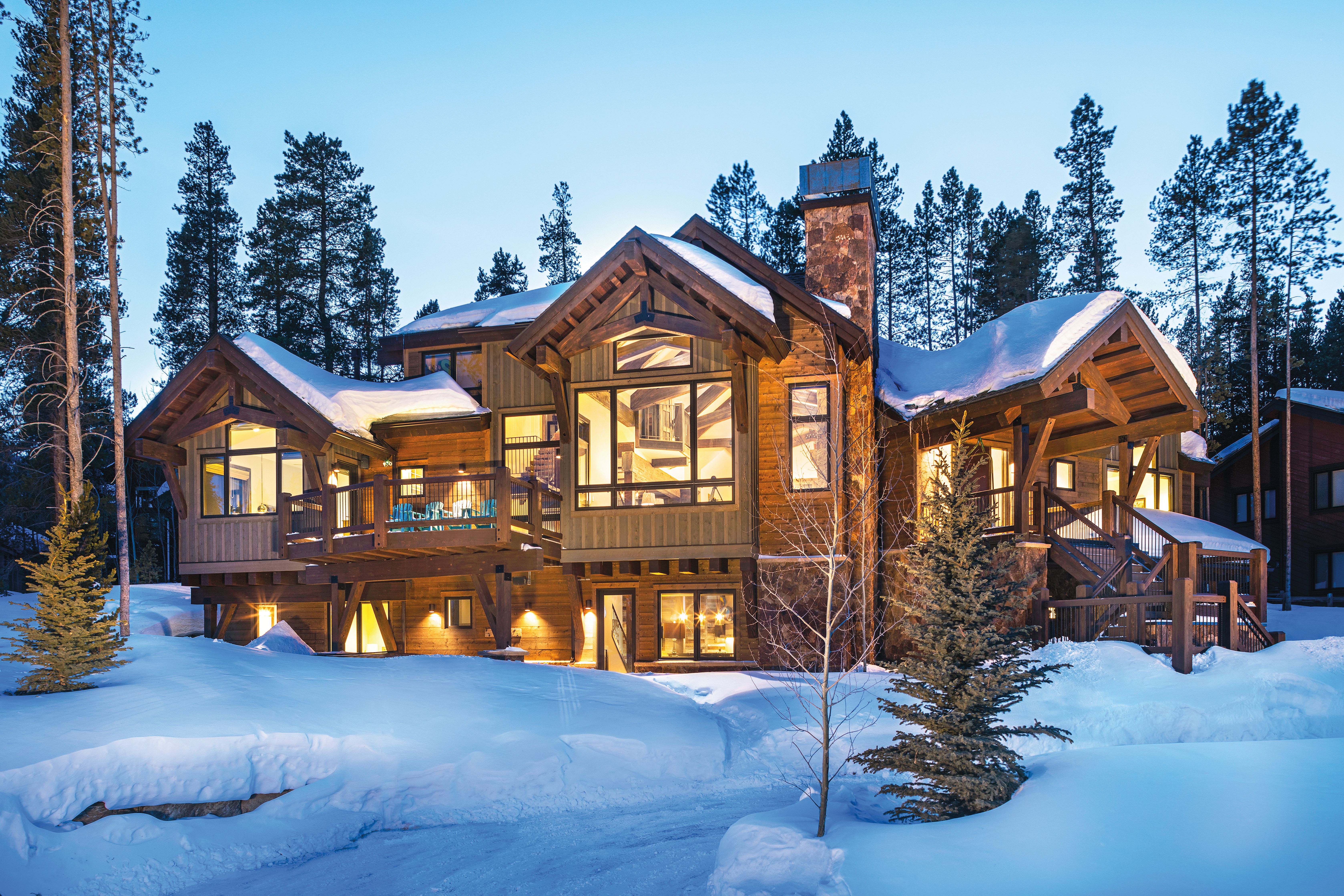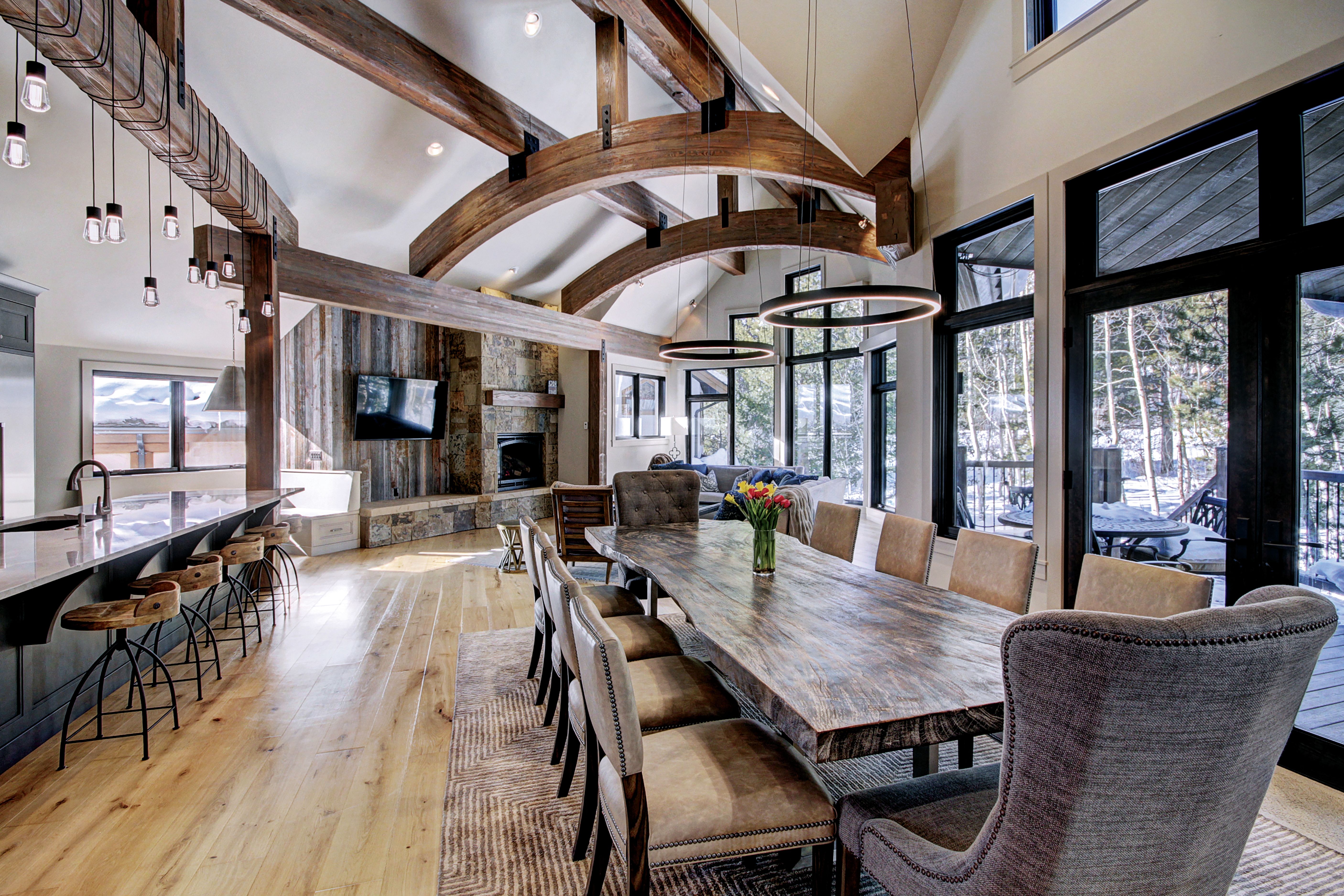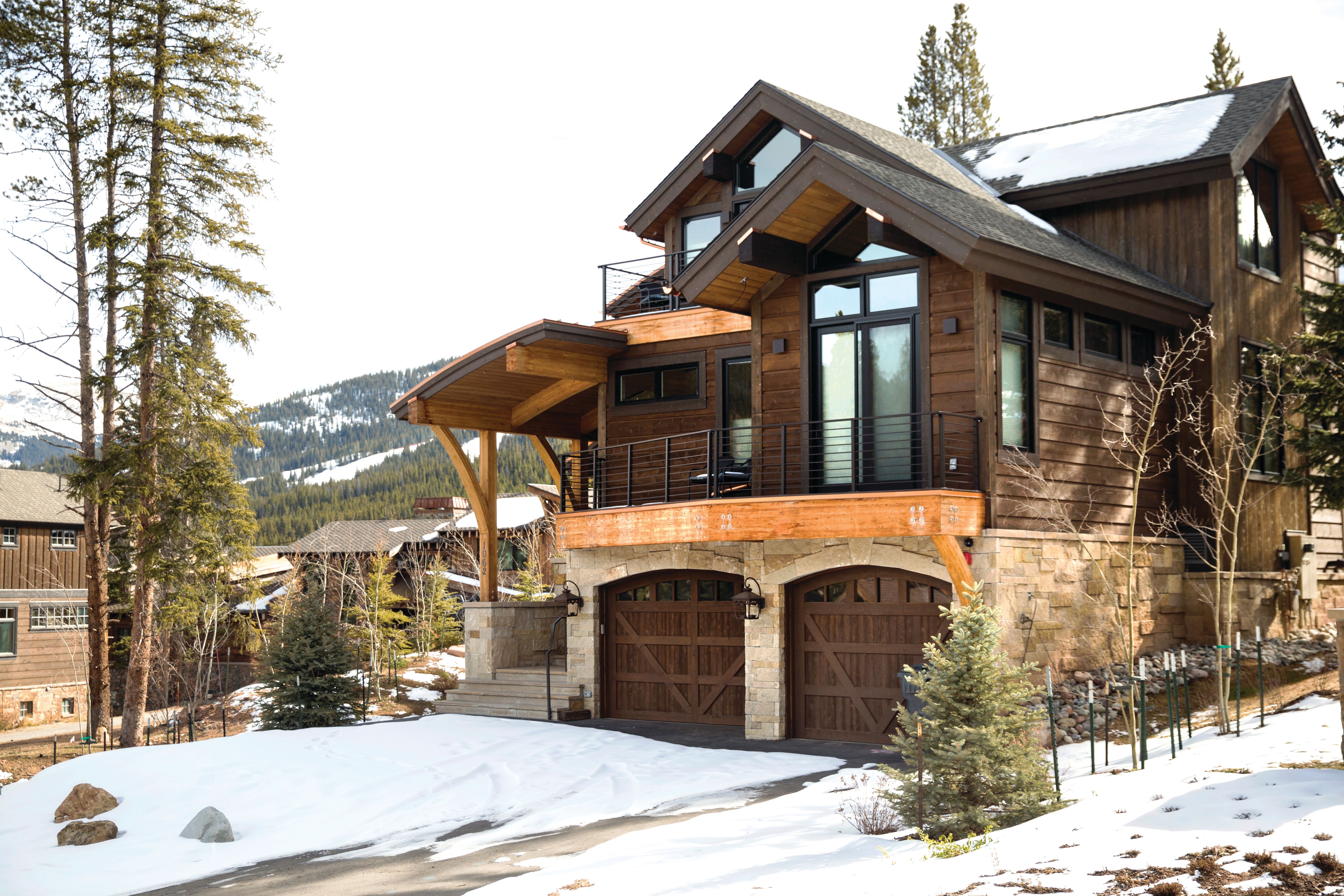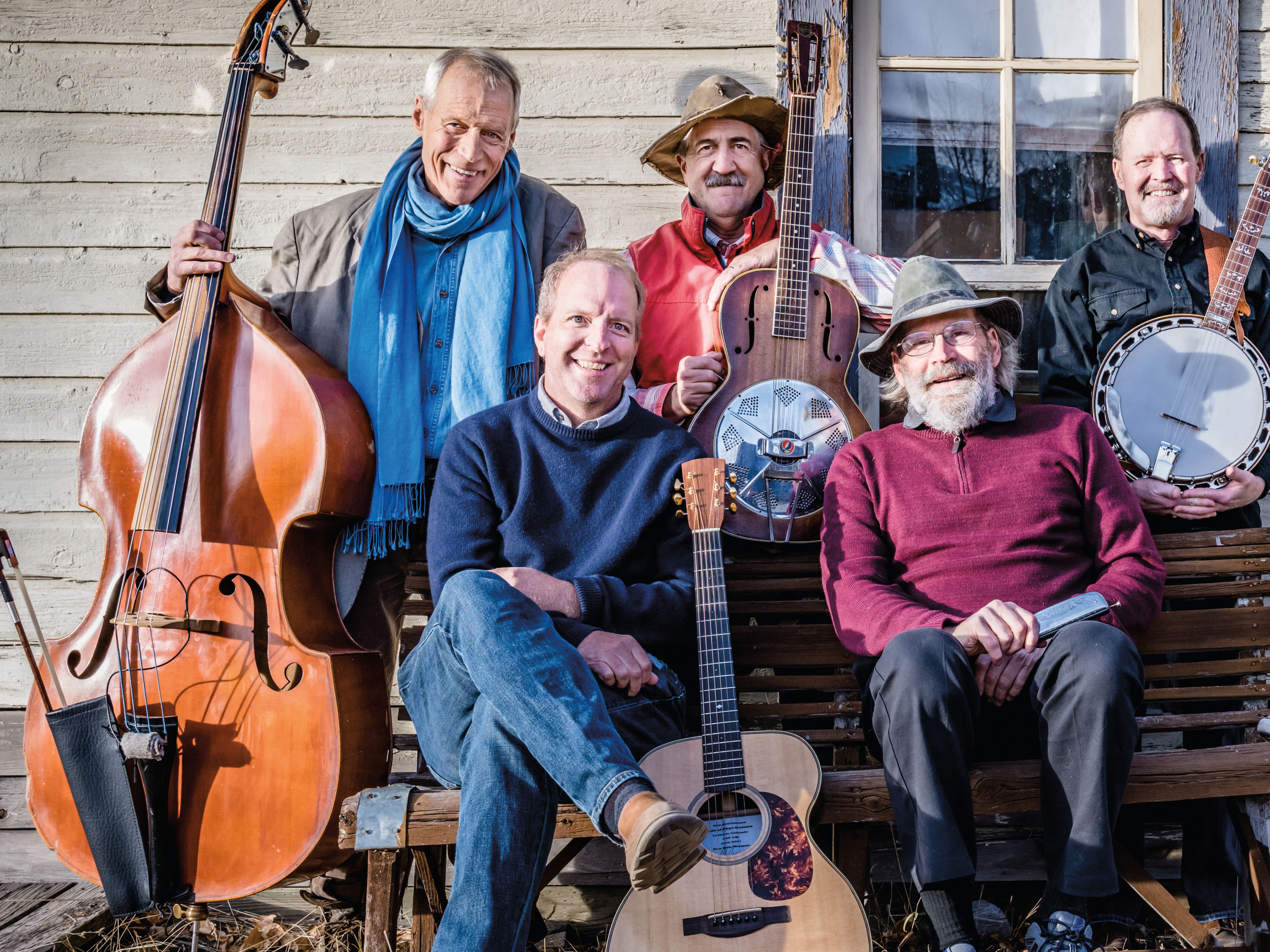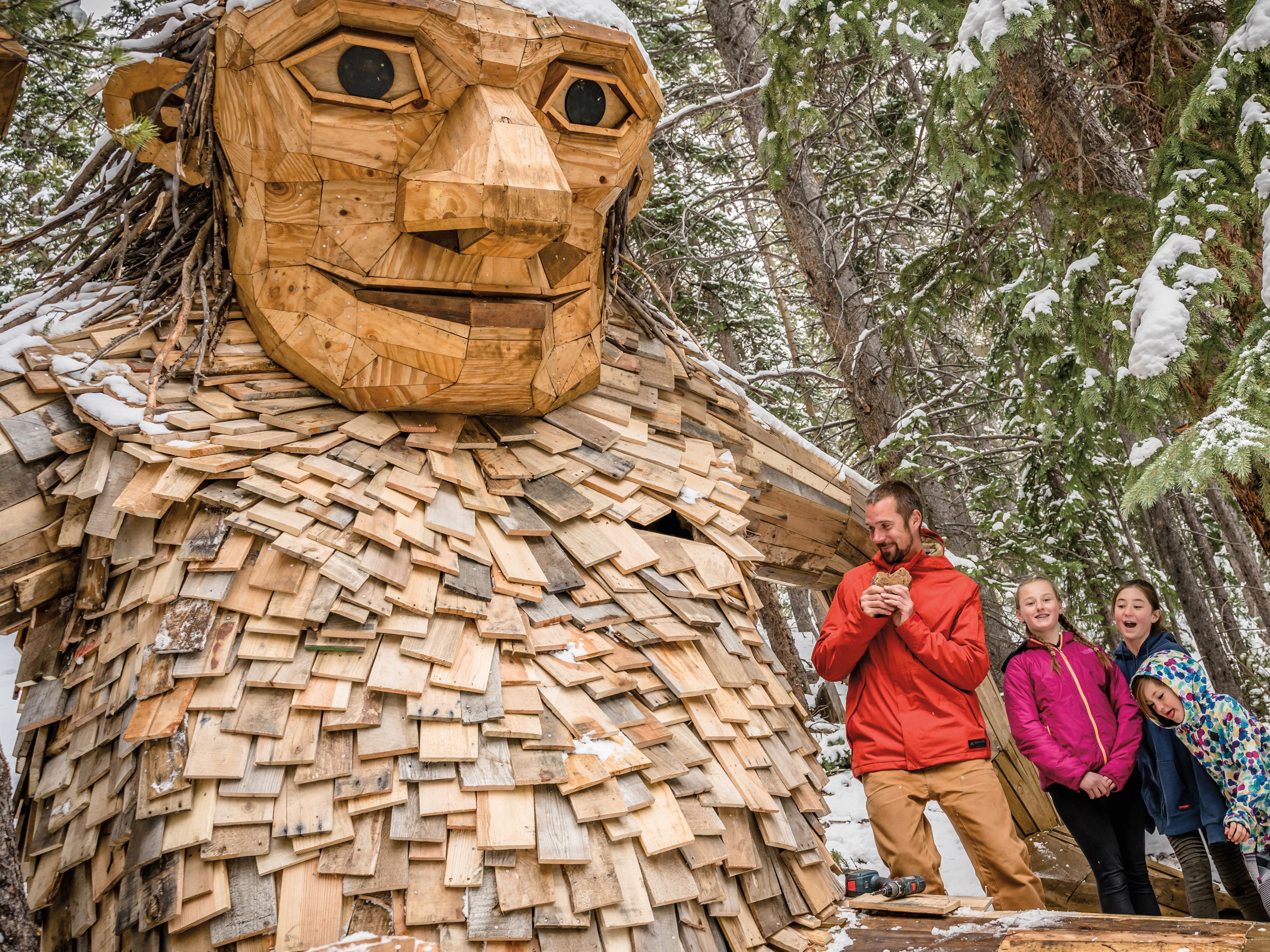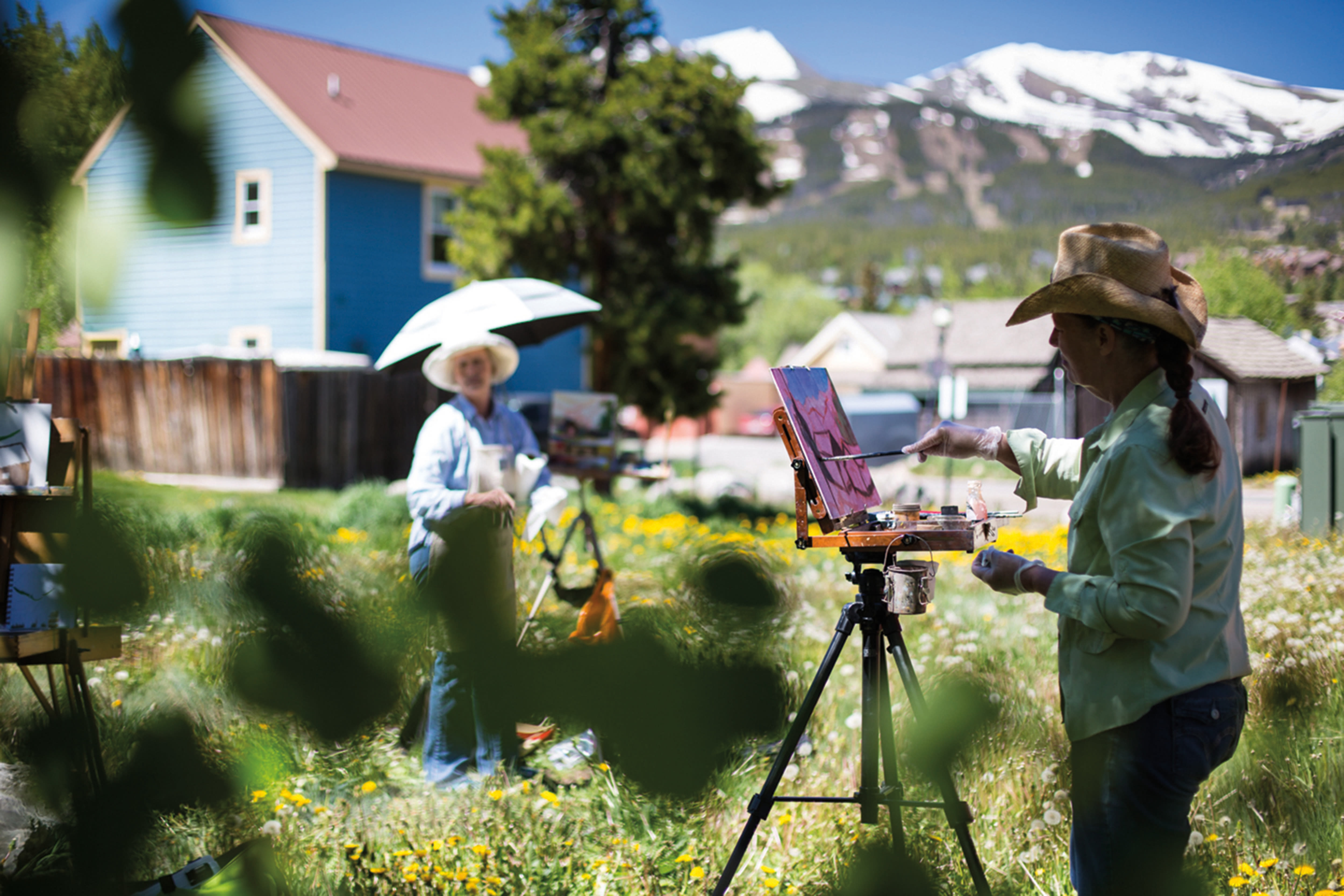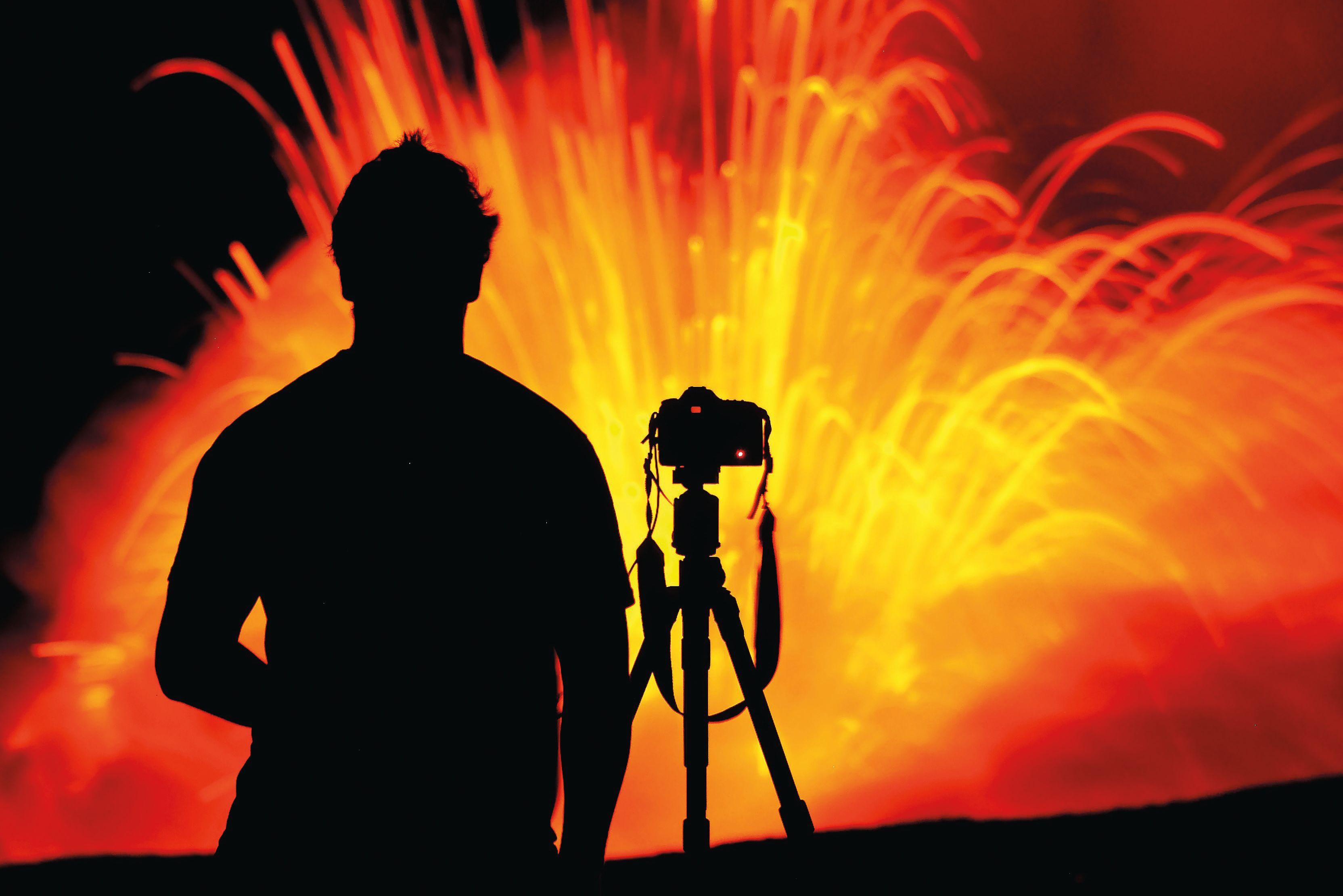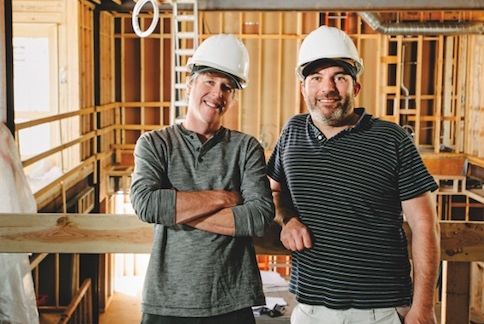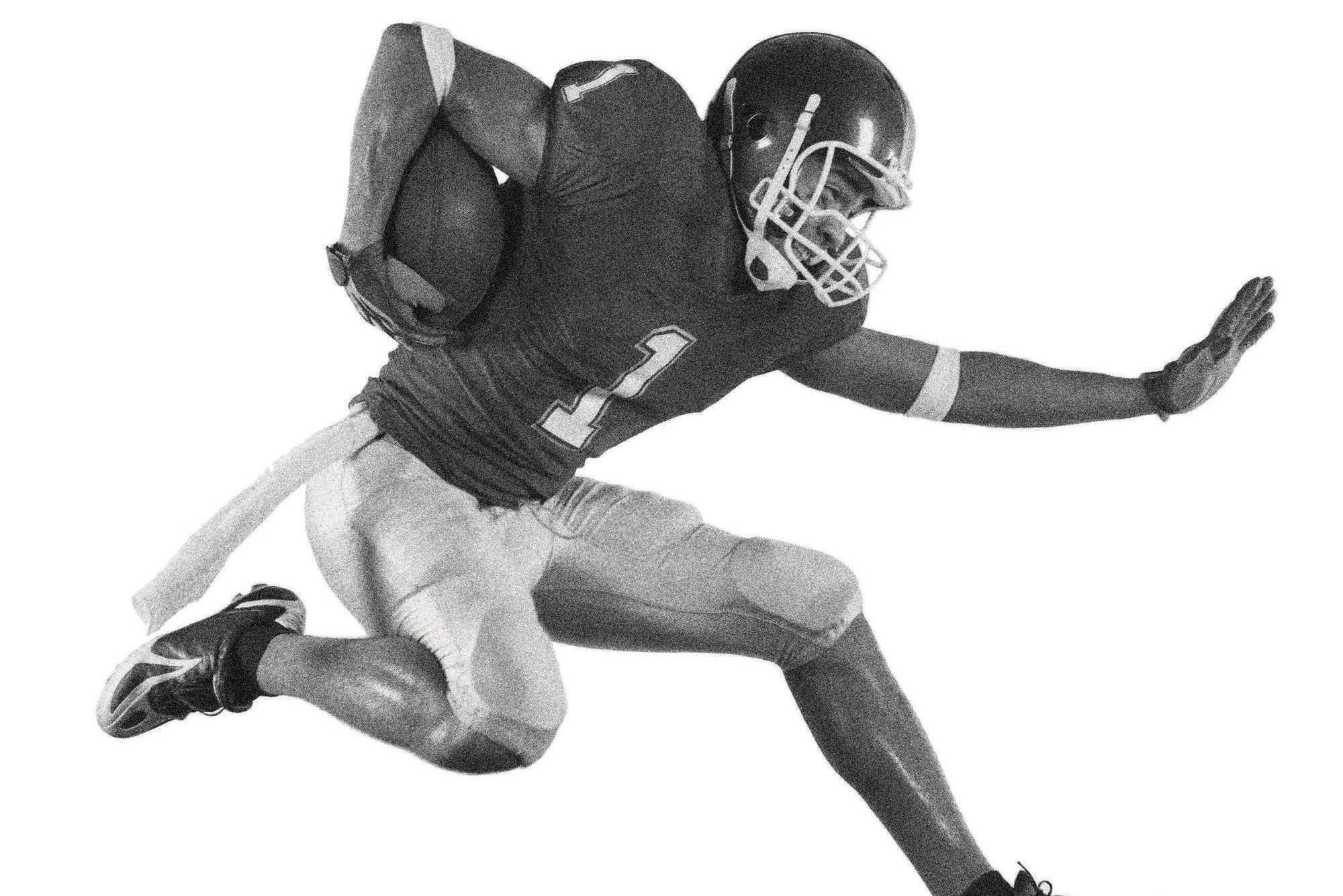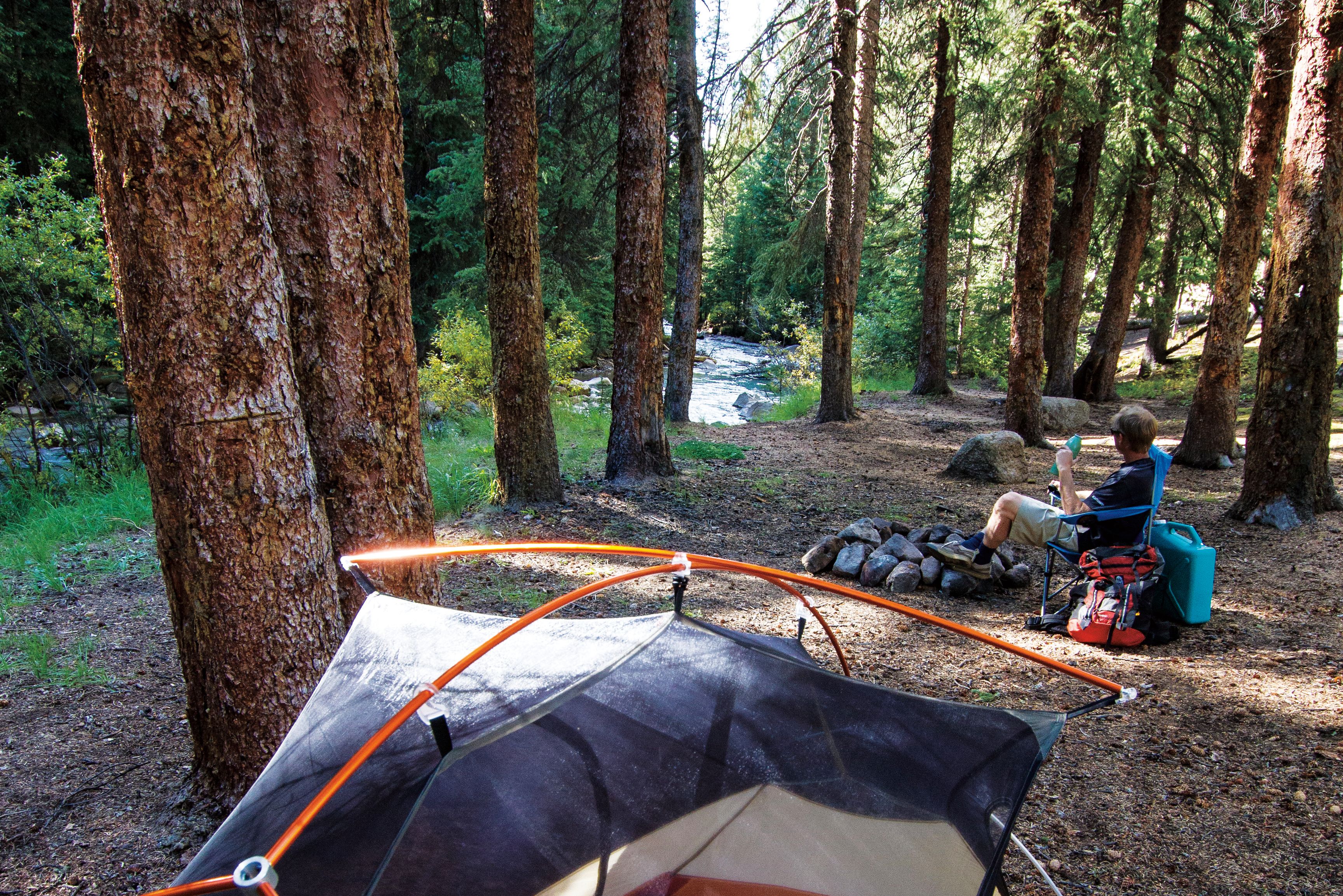
Camping
Outward Bound
An insider’s guide to Summit County’s fifteen most satisfying campsites (ultimate s’mores recipe included)
Everybody’s bucket list should include at least one summer night sleeping under the stars of Summit County, where high altitude and dark skies combine to bring the heavens down to earth. Even if you’ve never cooked a fish over an open fire or can’t abide the prospect of shouldering a back-breaking pack, we’ve got the tips to keep your trip on track. Whether you go by car, foot, hoof, or boat, follow our guide to a perfect night in the high-alpine bush.
Best by Four Wheels
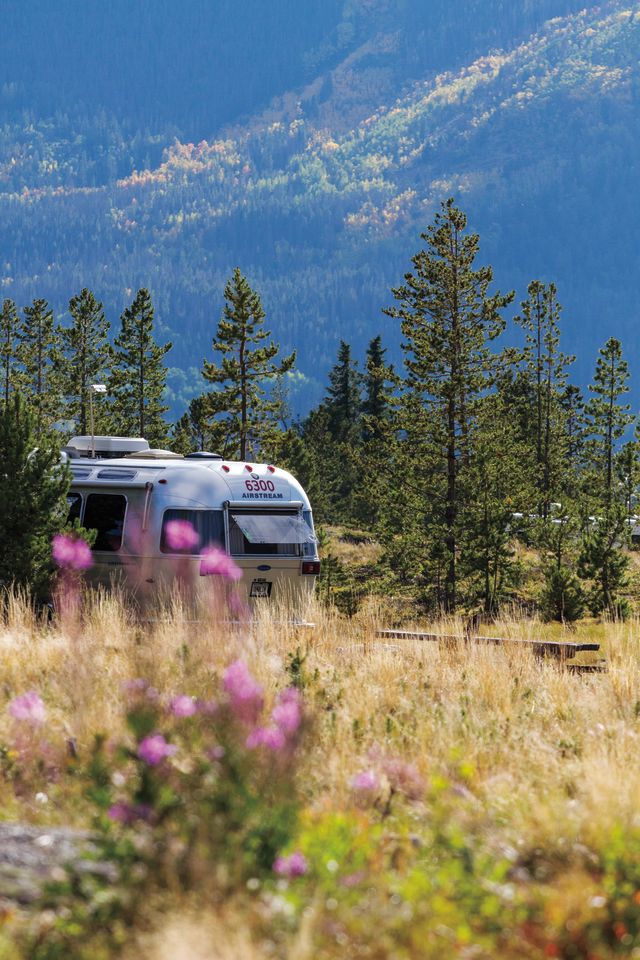
Peak One
It’s a summertime ritual as all-American as a Fourth of July parade. Car camping is how most of us were introduced to sleeping outside; it’s where we first really contemplated the constellations, where we roasted (and burnt, and still ate!) our first marshmallow, where we learned to make a fire without matches (butane lighters don’t count). Accessing a site by automobile opens up the camping ideal to kids and grandparents and dogs, and for the rest of us, let’s face it: sometimes it’s nice to have a down pillow and an extra blanket, a sturdy fireside chair, a cooler full of beer, a portable kitchen—heck, even a truck to duck into during that rare and unlucky (for you) midnight deluge. That doesn’t mean you have to give up serenity, however. Summit County’s national forest lands happen to be home to a multitude of some of the finest car-camping sites on either side of the Divide, many of them next to a soothing creek, along a glistening lake, or beneath a giant peak with no one else around, including these favorites:
For Solitude
Montezuma Road Purist car camping involves little more than a spontaneous pullout along a deserted road and a flat swath to pitch your tent. Summit’s best spot for that experience is on Montezuma Road (a.k.a. County Road 5) just east of Keystone, where a variety of pullouts place you on the turquoise-hued Snake River, often with an existing fire ring. You won’t find these campsites listed in any guidebook or on any website, but neither will the “Freebird”-singing late-night yahoos.
For Beauty
Prospector Campground One of the prettiest campgrounds in the White River National Forest, Prospector can be found on the east side of Dillon Reservoir off of Swan Mountain Road. The lakeside views are the best in the county, stretching from the pyramid summits of Peak 1 and Tenmile Peak to Buffalo Mountain and on up through the jagged Gore Range. The campground includes vault toilets and potable water and costs $18 a night; reserve in advance. fs.usda.gov
For Families & Kids
Peak One It’s rare at 9,100 feet to feel like you’re camping on the ocean, but that’s the beauty of Peak One Campground on the Frisco Peninsula. Summit’s most popular Forest Service campground features seventy-nine sites, flush toilets, potable water, and a maximum of ten people per site, meaning it’s ideal for a family reunion or a party with friends. Don’t feel like cooking? Grab dinner on Main Street, then ride bikes back to your camp on the paved recpath. Turn at the stoplight near the hospital off of Highway 9. Sites are $19 per night. fs.usda.gov
For Fishing & Swimming
Green Mountain Reservoir Summit County may be landlocked and at a higher elevation than virtually every other county in America, but that just means we’re blessed with high-alpine lakes brimming with trout waiting to pulled from the water and sizzling in the pan. Stake a spot at the Cow Creek North or South campground on the banks of Green Mountain Reservoir, and bring your fishing rod and bathing suit. To get there, drive twenty-six miles north of Silverthorne on Highway 9, turn left, and follow signs to Cow Creek. Sites run $13 a night. recreation.gov
For Procrastinators
Blue River Campground You’ll find this gem wedged between the Williams Fork Range and the Gore Range six miles north of Silverthorne on Highway 9. Unlike other Forest Service campgrounds in the area, the Blue River is first come, first served—but it still doesn’t get overcrowded aside from holiday weekends and peak season. Choose from twenty-four sites; about half of them are riverfront. Aside from the view, amenities include fire rings and pit toilets, so be sure to bring your own water. Sites are $14 a night. fs.usda.gov
Best by Foot
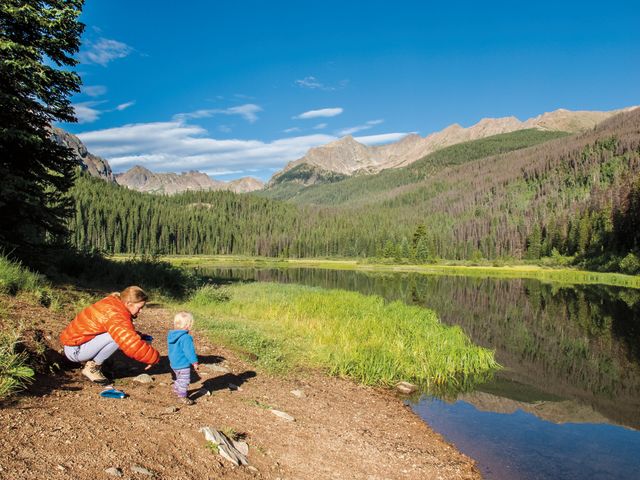
Lower Boulder Lake
As much as we all love each other and need to stay connected by the minute, getting away from cell phones, e-mail, and, yes, cars and tents containing other people can be a powerful release. Luckily, there are countless places to do just that during Summit’s fleeting summer, and you don’t need much more than a tent, a sleeping bag, a water bottle, and a map to find silent bliss. The Gore Range is my favorite place to backpack, but if I’m not feeling up to a long approach (every worthy campsite in the Gore requires spending at least a couple of hours on foot), other options abound. After all, the point of backpacking isn’t to exhaust yourself—although that does tend to deliver the most spectacular views. The point, simply, is to carry everything you need to survive in the wild on your back. That alone is an empowering feeling; once you’ve shed your pack and are hunkered down with a boil-a-meal and a stream-chilled microbrew at any of these backcountry destinations, you’ll wear that discomfort you endured like a badge of honor, a world away from the worries of civilization.
For Solitude
Upper and Lower Boulder Lakes You can bet that any hard-to-reach alpine lake will be empty and gorgeous, and Upper and Lower Boulder Lakes are perfect—and stunning—examples. Accessed most easily from the Rock Creek trailhead off of Highway 9, Lower Boulder requires a 2.8-mile hike over undulating terrain. Upper Boulder, another three miles up the rugged drainage, can be tough to find but is nonetheless worth the trip. To reach the Rock Creek Trailhead, drive 7.7 miles north of Silverthorne, turn left on Rock Creek Road, and follow to the trailhead. Hike up the Rock Creek Trail for a half-mile, turn right onto the Gore Range Trail and hike for two miles to Lower Boulder. To reach Upper Boulder, continue up the Boulder Creek Trail for another three miles.
For Beauty
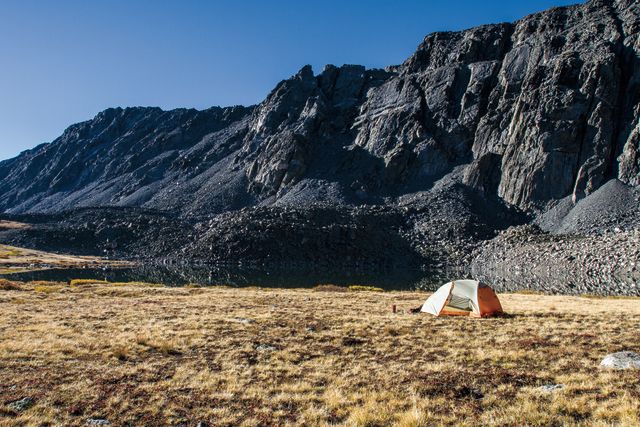
Mohawk Lake
Lower Mohawk Lake Wildly popular among day hikers, Lower Mohawk isn’t as overrun at night, nor are the best campsites, which you’ll find either along the velvety northern shore or on the rocky knolls perched above the southern shore. Explore old mining cabins on the western edge and the waterfalls to the east, where Spruce Creek spills down from the 11,860-foot lake. To reach the trailhead, drive 3.5 miles south from Breckenridge on Highway 9 and turn right on Spruce Creek Road. Turn left after a quarter-mile and follow the dirt road to the trailhead. The lake requires a 3.1-mile approach with a significant climb at the end.
For First-Timers
North Tenmile Creek Pristine wilderness backpacking doesn’t get much easier than this. You can literally start your adventure from a bar on Main Street in Frisco and be at your campsite along North Tenmile Creek within thirty minutes—and without putting your leg muscles through the fires of hell. Drive to the North Tenmile trailhead at the west end of Main Street (just beyond the I-70 ramp), and start there. After a half-mile, you’ll start to see riverside fire rings.
Best Sans Tent

Janet's Cabin
I was four miles into a six-mile mountain-bike ride, lost in the alpine quiet along Union Creek just south of Copper Mountain, when my heart fluttered. A trio of ptarmigans darted out from the grass as my front tire whizzed by, flapping their wings so violently I could have sworn it was thunder. I swerved and narrowly avoided a gruesome wipeout, then took a few minutes to collect my nerves. The reward came a handful of singletrack switchbacks later, when I arrived at my home for the evening, Janet’s Cabin ($35 per person per night; summithuts.org), a sprawling log structure that has been sheltering backcountry travelers for twenty-three years in the forest below Searle Pass.
As one of the most-visited huts in a state full of them, Janet’s is almost impossible to book on a winter weekend night. Once the snow melts, however, and the wildflowers explode into a kaleidoscopic haze of purple and yellow and red and blue, overnighting in the backcountry becomes an attainable goal.
With views of the Gore Range to the north and the Sawatch Range to the southwest, the stunningly peaceful alpine basin above Janet’s makes you forget that one of the busiest interstates in America winds out of sight and earshot two thousand feet below. But Janet’s isn’t iconic solely because of the terrain. It’s iconic because ... well, have you ever sat in a wood-fired sauna at 11,610 feet? Then sipped margaritas on a south-facing deck at sunset while a steak dinner sizzles inside? Then retired to a comfy upstairs bunk and snuggled into your sleeping bag for one of the soundest sleeps in nature?
Accessible only by foot or bike, Janet’s can be stop no. 1 on a multiday tour that continues over Kokomo Pass toward Tennessee Pass and Leadville. Or it can be a 3,000-square-foot off-the-grid destination unto itself.
Start your uphill grind at the Corn Lot on the east side of Highway 91, where the Colorado Trail winds down from the crest of the Tenmile Range. This adds an extra half-mile of trail, but you’ll travel through Copper Mountain and enjoy sprawling views to the north, which in the fall means gawking at a brilliant stand of golden aspen. From there, the narrow singletrack climbs mildly along Union Creek to Janet’s, one of the most peaceful access routes to any hut in Colorado.
Best by Boat

Kodi Rafting
Central Colorado happens to be one of the white-water rafting capitals of America, with a boatload of world-class rivers—Arkansas, Colorado, and Blue, to name a few—within a short drive from any town in the county. Although a vast majority of river rats, both visiting and local, opt for day trips, most area outfitters also offer overnight options, from one-nighters to weeklong trips aplenty—including a handful of less-imposing options for kids. Why go to the trouble of camping on a river when it’s so much easier to pitch a tent on an established trail? One word: solitude. “There’s nothing like pulling over to your own private beach to hang out for an afternoon and evening in a river canyon,” says Christy Campton, co-owner of Frisco-based Kodi Rafting, which has been guiding local waters for twenty-seven years. “You feel like you have the whole river to yourself.”
For One Night
Browns Canyon Summit’s only white-water options (the Blue River and Tenmile Creek) aren’t long enough for an overnight trip. But an hour south, you can run the Class III rapids through Browns Canyon on a twenty-five-mile overnighter with Kodi Rafting. Put in at the Narrows or in downtown Buena Vista, and take out at Big Bend. Fun for taste buds, too: meals include a steak and chicken fajita dinner, French toast and bacon for breakfast, and Kodi’s famous cheese tortellini lunch. $325 for adults, $275 for kids ages 7 and up. whitewatercolorado.com
For Multiple Nights
Three-Day Mild to Wild: Arkansas Valley Adventures is one of the only outfitters to take guests down the Class V Pine Creek rapids, one of the most difficult white-water sections on the Arkansas River. During this three-day, two-night trip, you start in Class II riffles and build up to the big stuff. $699 for adults, including all camping gear, wetsuits, and food. coloradorafting.net
For Kids
Two-day Colorado River Float Most outfitters offer a mellow float trip on the Upper Colorado, or “Upper C” as the locals call it. One of the best is the twenty-three-mile option provided by Breckenridge-based Performance Tours. For parents, the thrill is watching their kids (as young as 4) take their first sip of white water, a pint-size challenge of Class I and II rapids. $349 for adults, $299 for kids under 12. performancetours.com
Bonus
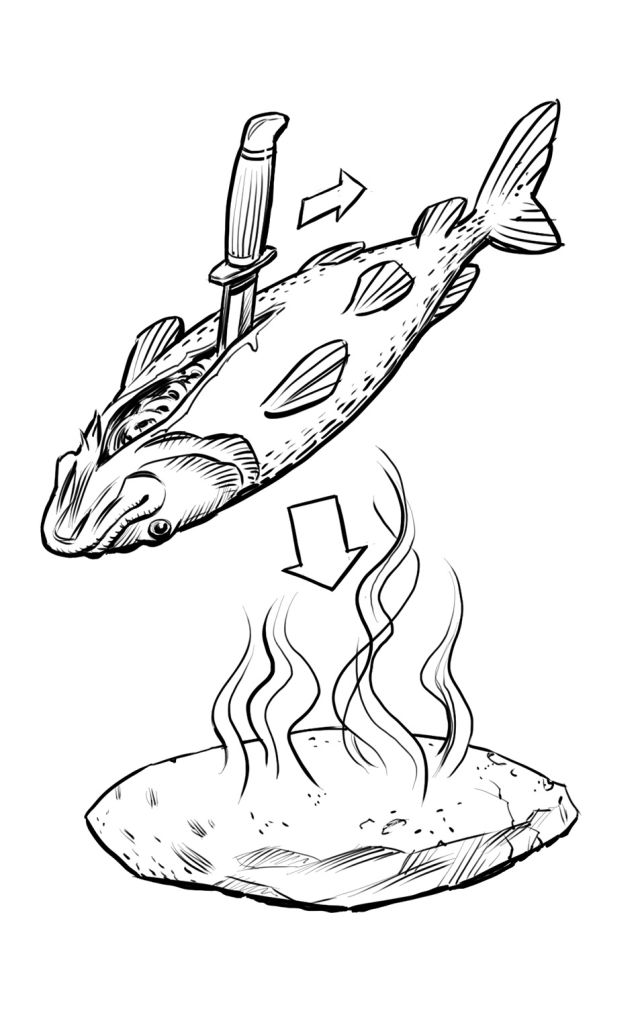
How to Cook a Fish Over an Open Fire So you’ve just impressed your tentmate by pulling a trout from a pristine alpine lake. Congratulations! Now what? Follow these instructions from Jackson Streit, who opened Summit County’s first guide service (Breck’s Mountain Angler; mountainangler.com) in 1977: First, gut the fish. Using a sharp, flexible knife (careful!), slice the fish’s underbelly blade-up from the tail to just past the pectoral fins. Reach in with your thumb and de-gut. Then drag your thumbnail across the black spinal lining with pressure to remove that too (it ruins the taste otherwise). Keep the head on unless you’re dealing with a very large trout, in which case you can filet the meat. Now you’re ready to cook. Place a flat rock next to your fire and angle it toward the coals. Once the rock has heated and the flame has died down, place the fish on the hot rock and cook thoroughly, flipping once. Then season with lemon juice (it’s easiest to bring a whole lemon and squeeze it onto the fish) and salt. Bon appétit!
Float It Alone
For those who would rather pilot their own boat, pick up a fourteen-foot raft from the Colorado River Center at Rancho Del Rio, an hour’s drive from Summit County near Wolcott. This should hold four to five people and all of the requisite supplies. Leave your car and take the shuttle to Pumphouse, where you’ll put in and start floating down the Upper Colorado through a series of Class I and II rapids. Watch for an island with tall trees and picnic tables on your left seven miles downriver; camp there. The next day, float the final three miles to Rancho and take out. You don’t need a permit for a private trip, but you will need to bring a backcountry loo. $320 for two-day raft rental, including paddles, wetsuits, life jackets, and helmets; $40 for four-person Pumphouse shuttle service. coloradorivercenter.com
Best by Four Feet
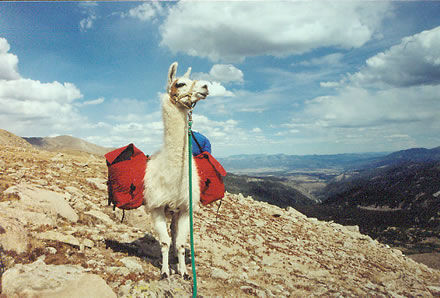
Spruce Ridge Llamas
So you like to hike and camp, but you dread shouldering an anvil-heavy pack over endless uphill miles? Let me introduce you to a few friends of mine: Nanouk, Fencer, Target, and Hershey. They’re the most-favored beasts of burden in Spruce Ridge Llamas owner Dan Jones’s stable. For the past twenty years, from July through September, Jones has led multiday llama treks into the Sawatch Range outside Salida, an hour and fifteen minutes south of Breckenridge. You carry your water and a light pack; the llamas, led by Jones and the guests, carry everything else, including delicious homemade meals and plenty of gear to ensure a comfy camping experience.
The most popular route follows the Cochetopa Creek Trail up a gentle climb from 9,000 feet to 10,400 feet, passing through huge stands of fir and aspen. You’ll camp creekside in a large meadow between two 13,000-foot peaks and enjoy hearty meals like New York strip steaks and ravioli with homemade sauce. (Breakfast options include yogurt with granola and homemade coffee cake.) A hike to the Continental Divide fills Day 2 before you return to the trailhead on Day 3. Total distance: about fifteen miles, walking on air the whole way, since Jones and his llamas do all the work. $489 per person for a three-day trek, $339 for a two-day trek. Kids 4–12 are half price. spruceridgellamas.com

